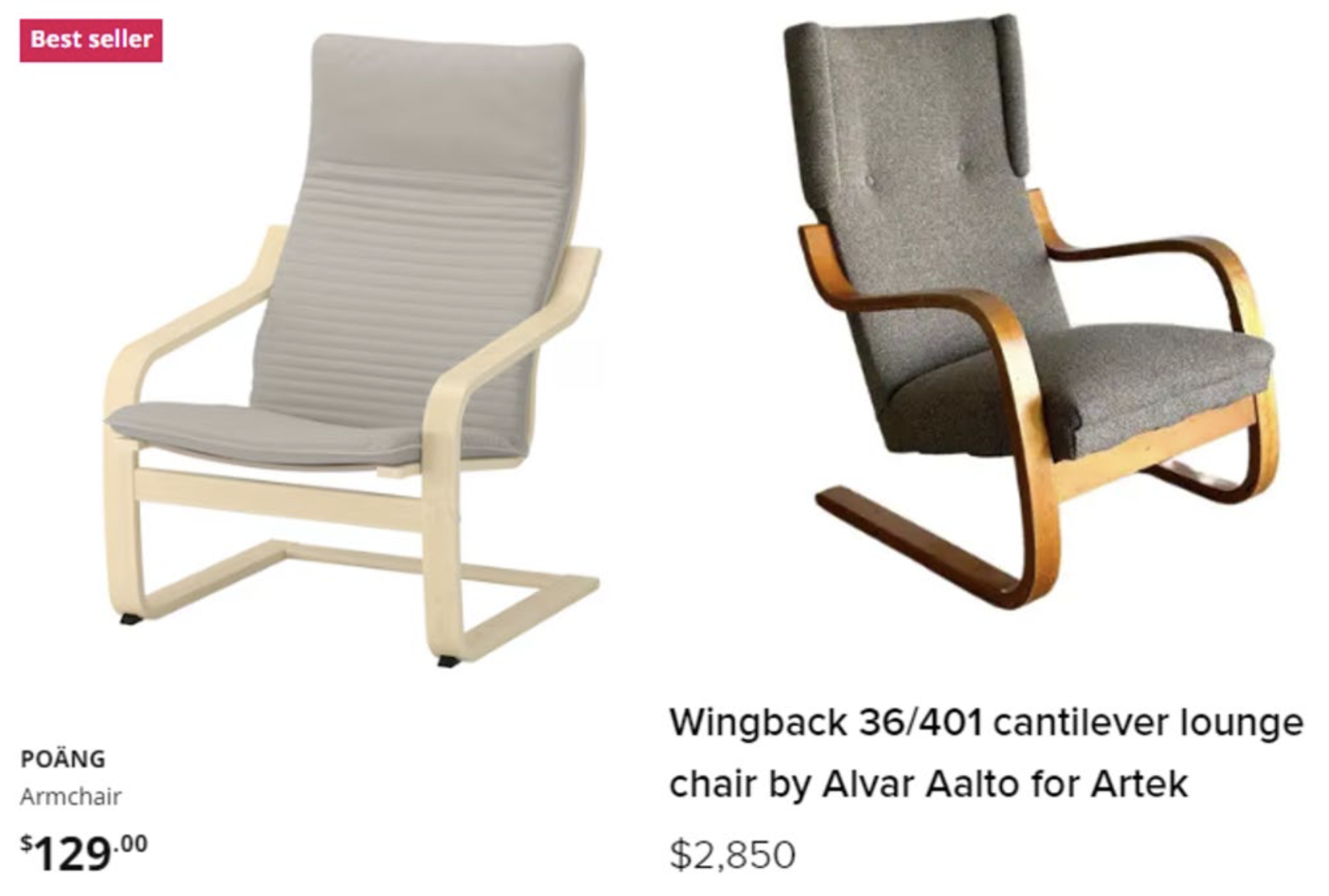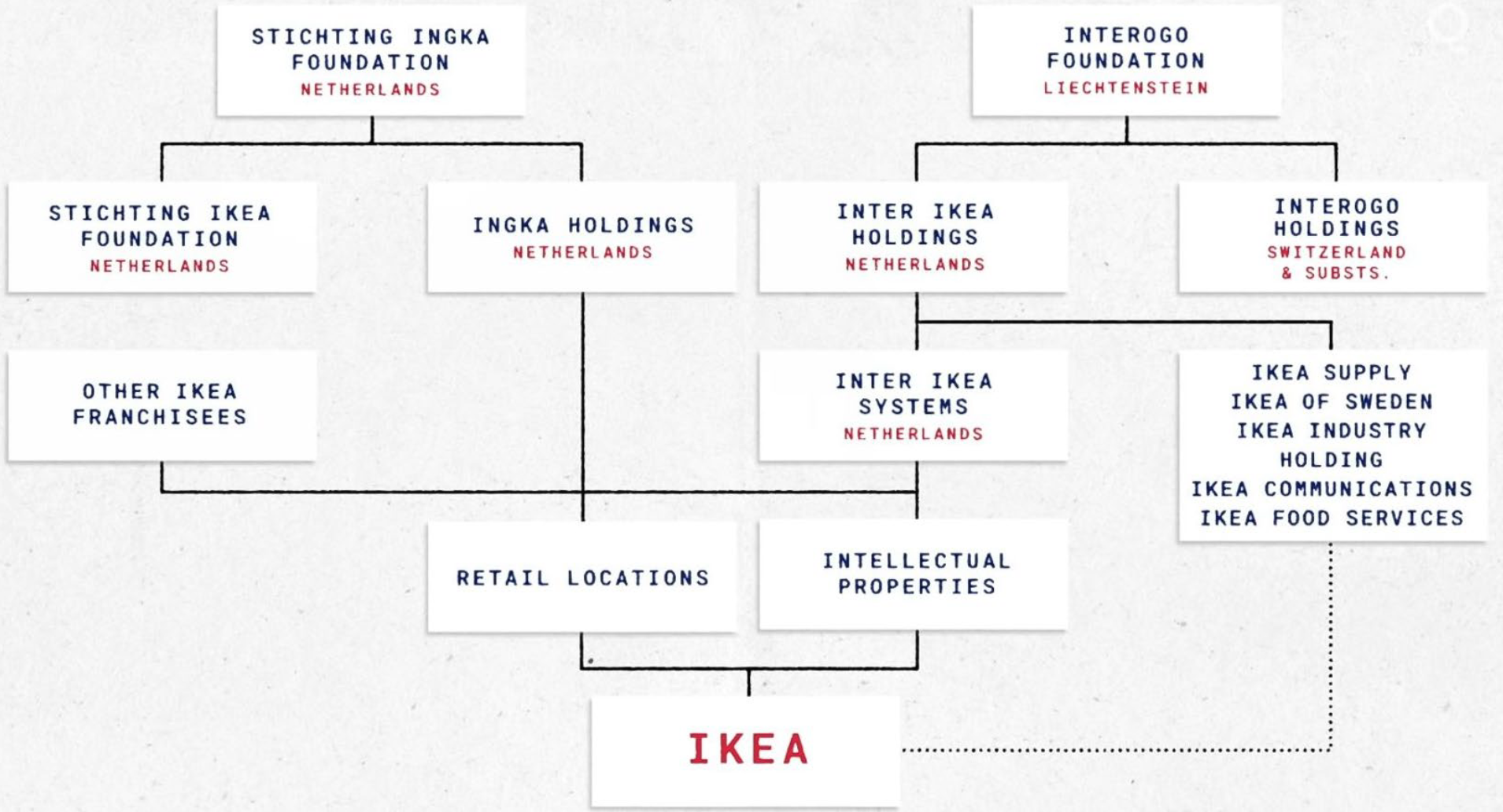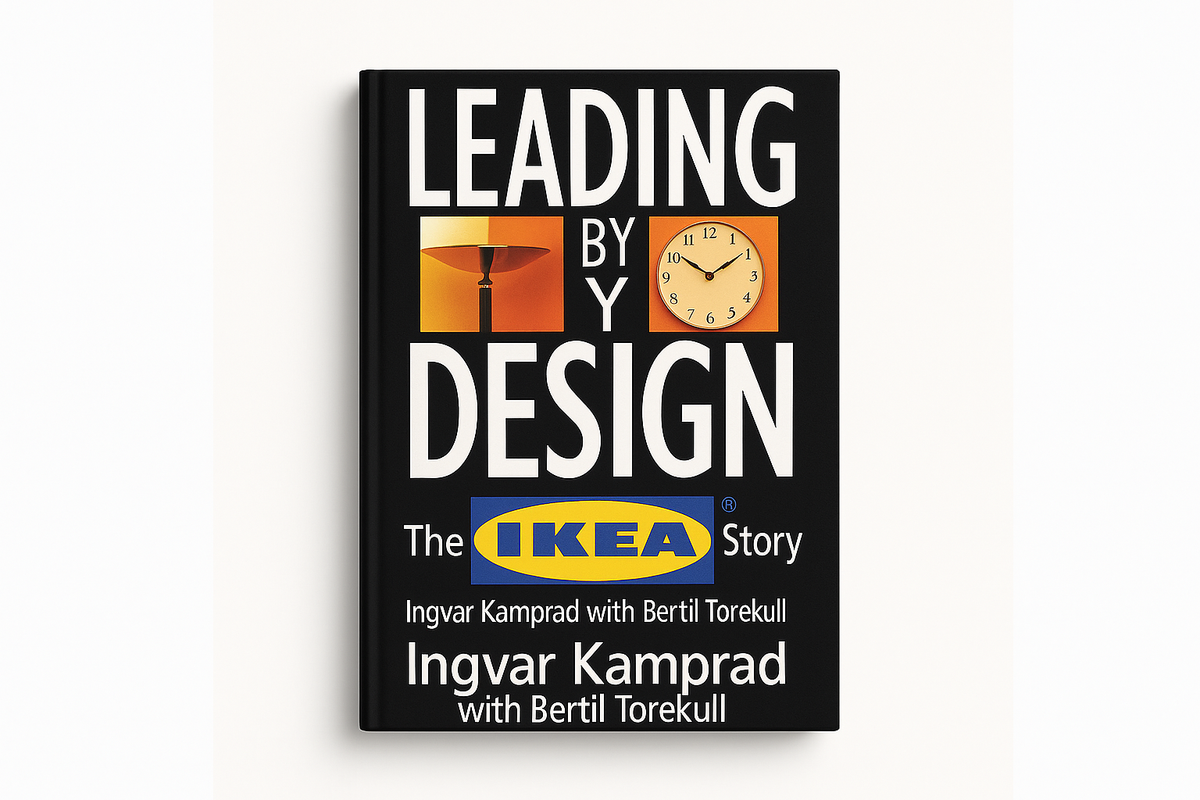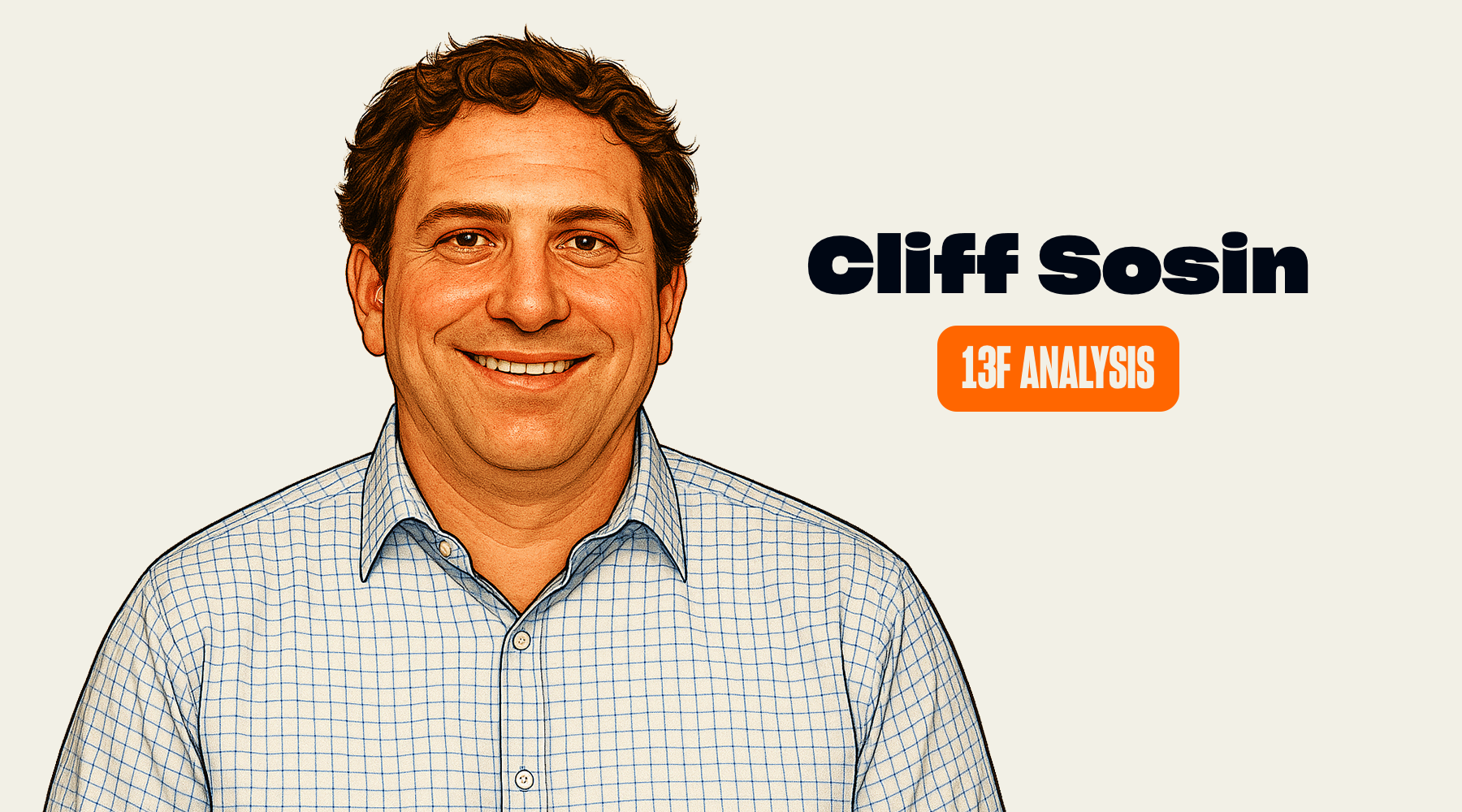IKEA sells a $9.99 table that costs more to ship than make—yet generates €45 billion annually. While competitors with 60% margins go bankrupt, IKEA deliberately keeps margins at 3% and sits on €100 billion. Learn how making customers do the work became the ultimate business moat in this deep dive.
For more on IKEA, check out my book summary of IKEA Leading by Design:

Executive Summary: The Five-Minute Version
Here's a company that sells a coffee table for $9.99. Not a toy table. Not a loss leader. An actual, functional coffee table that you can put your feet on while watching Netflix. The LACK table costs more to ship than to manufacture, yet IKEA makes money on every single one. In an industry where furniture retailers fight to control 5 percent of their home market, IKEA commands 7.5 percent of the global furniture market. They've accumulated over €100 billion in foundation assets—enough to run the company for three decades with zero revenue—without ever taking a dollar from investors, issuing a share of stock, or borrowing meaningful money.
Here's what matters:
- The business model: Customers do the work—transport, assembly, even warehouse picking—and somehow feel clever about it
- The moat: A supply chain built over 81 years with 1,600 suppliers who've been partners for an average of 11 years—good luck replicating that
- The numbers: €45.1 billion in revenue, 860 million store visits, average customer age of 24 (everyone else's is pushing 50)
- The lesson: The best business strategy might be convincing your customers they're geniuses for doing your job
The Impossible Business Model
Here's a $10 table.
Not a metaphor. Not an exaggeration. Walk into any IKEA store in America right now and you can buy a LACK coffee table for $9.99. Take it home. Assemble it yourself. Put your coffee on it. Ten dollars.
This shouldn't work. The particle board alone should cost more than $10. Then there's manufacturing in Poland, shipping across an ocean, trucking to 51 American stores, the retail overhead of 300,000-square-foot warehouses. Any rational analysis says IKEA loses money on every table.
And yet. They sell 20 million LACK tables a year. Have been doing it for decades. Make a profit on every single one.
Here's what everybody misses: the customer isn't buying a table. They're buying the chance to feel clever. As Ingvar Kamprad understood back in 1976 when he wrote his Testament: "Expensive solutions to any kind of problem are usually the work of mediocrity."
Translation: Why pay someone to do something you can convince customers is fun?
Part I: How IKEA Actually Makes Money
The Core Engine
Let's decode the machine. IKEA generates €45.1 billion annually, but the mechanics violate everything they teach at business school.
Take a simple transaction. You need a bookcase. At a normal furniture store: salesperson greets you, shows you options, arranges delivery, sends a crew to set it up. The store's all-in cost? About $200. Which means they need to charge you $500 to make it worthwhile.
IKEA's version: You wander through a maze for three hours. Find your own bookcase. Write down a cryptic code. Hunt for it in a warehouse. Wrestle it into your car. Drive home. Spend your Saturday afternoon deciphering wordless instructions. Total cost to IKEA? Maybe $50. Price to you? $79.
You saved $421. IKEA made $29. Everyone's happy. Except your marriage during hour two of assembly.
Each BILLY bookcase generates €59 in revenue against roughly €35 in total costs—materials, manufacturing, transportation, everything. That's a 40 percent gross margin. In furniture, that's absurd. Competitors are thrilled with 25 percent.
But wait. It gets weirder.
Harvard researchers discovered something in 2011 they couldn't quite believe. People value furniture they assembled themselves 63 percent more than identical pre-assembled pieces. Norton, Mochon, and Ariely ran the experiments multiple times. Same result. The more work you put into that BILLY bookcase, the more you love it. They named it the "IKEA effect"—the psychological phenomenon where labor leads to love.
There's a catch though. The effect only works if you successfully complete assembly. Fail to build it, or build it then destroy it, and the effect vanishes. Which explains why those wordless instruction manuals—maddening as they are—are engineered to ensure success. Every screw matters. Every step builds confidence. That three-hour assembly isn't a bug. It's the entire point.
The Revenue Architecture
IKEA's €45.1 billion doesn't come from one business. It's three businesses pretending to be one.
First, the stores—71 percent of revenue. These aren't stores. They're entertainment. The average customer spends two to three hours following that maze-like path through fake bedrooms and staged kitchens. One executive let slip that every additional minute in store equals €1.40 in additional purchases. Multiply that by 860 million annual visits. Those minutes add up.
The layout isn't random. It's what psychologists call a "Gruen transfer"—that moment when a consumer's original intentions get overwritten by the environment. You came for a lamp. You left with a bedroom set. The one-way path creates what researchers call "mysterious environments"—spaces that encourage continued exploration because you literally don't know what's next.
Second stream—e-commerce, 26 percent of revenue. This is IKEA's nightmare dressed as progress. Every online order hemorrhages money. Someone has to pick products (€15). Pack them (€10). Ship them (€45). Often assemble them via TaskRabbit (€50+). That's €120 in costs for a €200 order. After product costs, they're underwater.
So why do it? Because customers under 30 demand it. And peak IKEA customer age is 24. The company treats e-commerce like customer acquisition cost. Lose money today, create a customer for the next 40 years.
Third stream—services, just 3 percent but growing like crazy. Assembly, delivery, planning. This is where TaskRabbit comes in, acquired in 2017 for under $100 million. Customer orders €700 of furniture online. IKEA charges €350 for assembly. Pure margin—they're just the middleman between you and a gig worker who actually knows how to use an Allen wrench. Genius move: they've monetized their biggest weakness.
Margin Analysis: The Numbers That Shouldn't Exist
Here's where it gets interesting. Or suspicious, depending on your perspective.
Fiscal year 2024: IKEA deliberately cut prices globally by 10 percent. Revenue dropped from €47.6 billion to €45.1 billion. Any normal company would be in crisis. IKEA? Store visits jumped 21 percent. They sold 1.2 billion meatballs. The strategy worked exactly as planned.
Consider the industry context. The average furniture retailer struggles to hit 10 percent operating margins. Restoration Hardware, selling $8,000 couches to people with too much money, manages 15 percent. IKEA deliberately maintains around 3 percent.
Three percent! They're leaving billions on the table. On purpose.
Why? Because Kamprad believed—and his successors still believe—that high margins attract competitors. Low margins are a moat. "The aim of our effort to build up financial resources," he wrote, "is to reach a good result in the long term."
Translation: We'll outlive everyone.
The math only works through operational efficiency that borders on fanaticism. IKEA operates with one-fifth the staff per square foot of normal retailers. No commissioned salespeople hunting you down. No customer service unless you beg. Customers do their own everything.
This isn't cost-cutting. This is the entire business model.
The Strategic Moat Quantified
Every MBA asks the same question: What prevents copying?
The obvious answer: IKEA's supply chain. They work with 1,600 suppliers across 55 countries. Average relationship length? Eleven years. They plan products two to three years ahead, investing in their suppliers' technology, sharing cost-saving innovations. They pay within 30 days for a 3 percent discount while competitors take the same discount but pay after four months.
But that's not the real moat.
The real moat is three generations of customer behavior modification. IKEA has trained hundreds of millions of people to shop in a completely unnatural way. And—this is the kicker—to feel smart about it.
Want proof? Let me tell you about STØR.
1992. Some American entrepreneurs look at IKEA and think: we can do this. They create STØR Furnishings. Copy everything. Flat-pack furniture. Warehouse stores. Even the catalog—so similar that customers literally couldn't tell them apart. IKEA had to sue for copyright infringement.
STØR opened four massive stores. Quality products. Lower prices than IKEA. Perfect locations.
Five years later: dead. Lost $10.7 million on $70.4 million in sales. IKEA bought the corpse for $20 million, mostly for the real estate.
What went wrong? STØR had everything except customers willing to behave like IKEA customers. Turns out you can't just flip a switch and make Americans want to spend Saturday assembling furniture.
More recent attempts have gone worse. Kmart threw $500 million at flat-pack furniture in 2010. Priced 20 percent below IKEA. Return rates hit 35 percent compared to IKEA's 5 percent. Dead in 18 months.
Walmart tried in 2017. Captured $200 million in first-year sales with prices 30 percent below IKEA. But customers kept assembling furniture wrong, then returning it. The generous Walmart return policy—designed for normal products—became a money incinerator. Discontinued by 2019.
And then there's Wayfair. Founded in 2002, they're the most ambitious IKEA competitor ever. Twenty-two years later, they've never made an annual profit. Not once. They lost $1.33 billion in 2022 alone—their biggest loss ever. Customer acquisition cost: $165. IKEA's: €3.
Part II: The Strategy Nobody Else Can Execute
The Anti-Playbook
Business school teaches you to maximize gross margins. Minimize customer effort. Provide exceptional service. IKEA took those rules and lit them on fire.
Instead of maximizing margins, they compress them like they're being paid to. The Poäng chair—been around since 1976—tells you everything. In 1990, adjusted for inflation, it sold for over $300. Today? $79. They drove the price down 70 percent through scale. They sell 1.5 million annually and still reduce the price every few years.
A comparable chair from Finnish design firm Artek runs $2,850. Same bentwood design. Same basic materials. Thirty-six times the price.

This is deliberate. Kamprad called it "standing on the side of the many people." Not customers. Not consumers. People. Many of them.
Instead of reducing customer effort, they increase it. But—and here's the genius—they make it feel like an adventure. That maze through the store? That's three hours of free labor IKEA doesn't have to pay for. The customer picking their own products? That's warehouse workers they don't need. The assembly? That's millions of hours of labor customers donate to IKEA annually. While feeling clever about it.
Value Chain Revolution
Traditional furniture works like this: Designer creates product (6 months). Manufacturer builds it (3 months). Distributor warehouses it (adds 30 percent). Retailer displays it (adds 100 percent). Delivery company transports it (adds $200). Installation crew assembles it (adds $150). Total time: 8-12 weeks. Total markup: 300 percent.
IKEA's version: 12 designers create 12,000 products. IKEA Industry produces the complex stuff in-house—about 10 percent of products. They own forests in Romania and Poland. They partner with whoever can make things cheapest—window factories for table legs, shirt makers for cushions. Ship everything flat. Customer does delivery and assembly. Total time: immediate. Total markup: 40 percent.
Customers prefer it. Not tolerate it. Prefer it.
One consultant explained: "Before IKEA, buying furniture was like buying a car. Major decision. Live with it for decades. IKEA made furniture disposable. Buy it, use it, toss it when you're bored."
Competitive Dynamics: The Graveyard of Attempts
Since 1990, I count 37 companies that tried to copy IKEA. Let me tell you about the corpses.
STØR thought they had it figured out. Perfect knockoff. Lost $10.7 million in five years.
Kmart thought they had the scale. $500 million investment. Return rate hit 35 percent. Customers couldn't figure out assembly.
Walmart thought they had the logistics. Customers assembled wrong, returned everything. Their generous return policy—their strength everywhere else—killed them.
But Wayfair. Oh, Wayfair. They're the zombie that won't die. Twenty-two years. Never profitable. Not one year. They lose money on every single order and make up for it in... nothing. They make up for it in nothing. Customer acquisition cost of $165 when IKEA spends €3. They're the perfect example of what happens when venture capital meets furniture. You get a company worth $7 billion that's never made a dollar.
The pattern never changes. Competitors see the surface—flat boxes, big stores, Swedish meatballs. They miss the system underneath. Three generations of behavioral conditioning. Supply chains built over decades. A culture where wasting resources is literally considered a "mortal sin."
You can't copy that. You can only build it. Over 81 years.
Part III: What IKEA Teaches Us
The Psychology of Effort
Here's what IKEA understands that nobody else does: Making people work makes them happy. But only if they succeed.
Norton, Mochon, and Ariely proved this at Harvard. Consumers will pay 63 percent more for furniture they assembled themselves versus identical pre-assembled pieces. But—and this is crucial—only if assembly succeeds. Fail to complete it, or complete it then destroy it, and the effect vanishes.
This is why those instruction manuals are genius disguised as frustration. No words—can't mistranslate. Every screw numbered—can't mix up. Every step builds on the last—can't skip ahead. They're not designed for efficiency. They're designed for success. Because success creates love. And love creates customers for life.
Think about it. When was the last time you felt proud of buying something from Amazon? But that HEMNES dresser you spent four hours building? You'll defend that thing in a divorce.
The Constraint Advantage
IKEA's origin story is a masterclass in constraints. Kamprad started with 500 krona from selling matches. No investors. No connections. No choice but to be cheap.
The 1961 Swedish furniture boycott should have killed them. Every Swedish manufacturer refused to sell to IKEA. Kamprad's response? Got on a train to communist Poland. Behind the Iron Curtain. Found factories desperate for hard currency. Labor costs: 80 percent lower. Quality: actually higher. Centuries of craftsmanship.
The boycott designed to destroy IKEA forced them to find better suppliers at lower costs. As Kamprad wrote: "Regard every problem as a possibility."
Modern translation: Your biggest weakness is probably your biggest opportunity. You just haven't been desperate enough to see it.
The Time Horizon Arbitrage
IKEA thinks in decades while everyone else thinks in quarters. In 1978, they entered China—15 years before China opened to foreign retailers. Cost: $50 million in infrastructure for a market that didn't exist. Today: €3 billion in annual revenue from China.
The formula is simple: If something compounds at more than 10 percent annually and you can wait 20 years, take any short-term pain to secure it. IKEA identified dozens of these opportunities. Their competitors saw them too. But competitors have shareholders. Shareholders have quarters. Quarters have earnings calls.
IKEA has none of that. They have foundations with €100 billion and dead man's wishes. They can wait forever.
Part IV: The Origin Story
From Matchboxes to €45 Billion
Five-year-old Ingvar Kamprad discovered capitalism in 1931. Depression-era Sweden. His aunt helped him buy 100 matchboxes from Stockholm for 88 öre. He sold them for two to three öre each, sometimes five to wealthy farms.
Do the math. That's a 200 to 400 percent markup. To a five-year-old.
But here's what separated Ingvar from every other kid with a matchbox hustle: he didn't buy candy. He bought more matches. Then Christmas cards. Then fountain pens. By age 10, he's bicycling around Småland with saddlebags full of merchandise, learning the lesson that would build an empire: Volume beats margins. Always.
At 17, his father gave him money for good grades. Not much—maybe worth $1,000 today. Ingvar registered a company. IKEA. Ingvar Kamprad, Elmtaryd, Agunnaryd. The boy, his farm, his parish. The naming tells you everything—this wasn't ambition, it was identity.

The Showroom Revolution
March 1953, Älmhult, Sweden. Ingvar rents an abandoned joinery and puts an ad in the paper: "Coffee and buns for all visitors!" He sets up for maybe 50 people.
One thousand show up.
The line runs down the street. Coffee's gone by 10am. Buns by noon. The second floor creaks so badly Ingvar thinks it might collapse. Chaos.
But something magical happens. Customers don't just look at furniture. They sit on sofas. Open drawers. Lie on beds. They bring their kids. Make it an outing. More furniture sells that day than Ingvar typically moved in a month.
The revelation: Furniture shopping wasn't just commerce. It was entertainment. A chance to dream about a better life. Touch things. Imagine possibilities. As Kamprad would later write: "By refusing to accept a pattern simply because it is well established, we make progress."
That creaking showroom in Älmhult became the template. Make shopping an experience. Let customers touch everything. Give them coffee. Make them stay.
Part V: The Scaling Story
How to Grow 10,000x Without Outside Capital
Between 1953 and 1973, IKEA grew from 6 million to 600 million krona. No venture capital. No IPO. No debt. How?
Simple. Kamprad treated growth as math: Revenue = Stores × Visitors × Conversion × Basket Size. Maximize each variable.
Take the meatballs. 1959, IKEA opens its first restaurant. Not because customers wanted food. Because hungry customers leave. And customers who leave don't buy. Kamprad's observation: "No good business is done on an empty stomach."
The pricing was deliberate. Hot dogs: 5 krona. Everywhere else: 10-15 krona. Restaurant profit margin: 5 percent max. Any profit above 5 percent should improve quality, not margins. Kamprad wanted customers fed, not profitable restaurants.
By 2017, IKEA was the world's sixth-largest restaurant chain. 700 million customers annually. 30 percent come just to eat. In 2024 alone: 1.2 billion meatballs sold.
Or take flat-pack's discovery. Legend says employee Gillis Lundgren removed table legs in 1956 to fit a table in his car. Maybe true. Maybe not. Doesn't matter. The real innovation wasn't flat-packing—Chinese furniture makers had done that for centuries. The innovation was making assembly part of the value proposition.
"You save money because you do the work" became "You're clever for doing this yourself."
The Competition Responds
By 1961, IKEA was consuming half of Swedish furniture production. The National Association of Furniture Dealers had seen enough. They organized a boycott. Any manufacturer selling to IKEA would be blacklisted. Within weeks, 60 percent of IKEA's inventory vanished. Two weeks of stock left.
Kamprad's response defied all logic. He got on a train to Poland. Communist Poland. 1961. The Iron Curtain.
But Poland's furniture industry was massive. Skilled. Desperate for hard currency. Labor costs: 80 percent lower than Sweden. Quality: actually higher. Centuries of craftsmanship versus decades of Swedish industrialization.
Within a year, Poland was producing half of IKEA's catalog. The boycott meant to kill IKEA had forced them to find better suppliers at lower costs. The Swedish manufacturers had played themselves.
As Kamprad would write: "By always asking why we are doing this or that, we can find new paths."
Part VI: The Cultural Testament
The Nine Commandments of IKEA
December 1976. Ingvar Kamprad writes "The Testament of a Furniture Dealer." Not mission statement. Not corporate values. Testament. Like Moses coming down from the mountain, except the mountain is Swedish frugality and the tablets are particle board.
These aren't platitudes. They're operating instructions that 200,000 employees still follow:
"The product range—our identity": Offer well-designed, functional home furnishing products at prices so low that as many people as possible can afford them. Not customers. People. As many as possible.
"The IKEA spirit": Enthusiasm, renewal, thrift, responsibility, humbleness, simplicity. Note what's missing: innovation, disruption, excellence. IKEA doesn't want to be excellent. It wants to be sufficient for many.
"Profit gives us resources": "Profit is a wonderful word!" But profit isn't the goal. It's fuel. Fuel to reach more people.
"Reaching good results with small means": "Wasting resources is a mortal sin at IKEA." Not a mistake. Not inefficient. A mortal sin. "Any designer can design a desk for 5,000 kronor. But only the most highly skilled can design a good, functional desk for 100 kronor."
"Simplicity is a virtue": "Complicated rules paralyze!" This is why IKEA operates with one-fifth the staff of normal retailers.
"Doing it a different way": "By refusing to accept a pattern simply because it is well established, we make progress." This isn't innovation for innovation's sake. It's innovation for cost's sake.
"Concentration": "We can never do everything, everywhere, all at the same time." Focus beats diversification.
"Taking responsibility": "Only while sleeping one makes no mistakes. The fear of making mistakes is the root of bureaucracy." Make mistakes. Just make them cheap.
"Most things still remain to be done": "The feeling of having finished something is an effective sleeping pill." After 81 years, IKEA still acts like a startup. A startup worth €200 billion, but still.
This culture can't be copied. When competitors try to replicate IKEA, they can't replicate 200,000 employees who genuinely believe wasting resources is a sin.
Part VII: The Modern Era
The Globalization Gambit
Taking IKEA global shouldn't have worked. The model depends on Swedish frugality—what Swedes call "lista," making do with less. Americans want everything huge. Japanese want everything tiny. Indians want everything colorful. Chinese want everything new.
But Kamprad bet on something universal: Everyone loves a deal. Whether Stockholm or Shanghai, saving 70 percent on a bookcase feels amazing.
First test: Germany, 1974. The Munich store lost money for six months. Germans didn't get it. Then young Germans—raised in postwar frugality—discovered it. They understood making do with less. They understood building it yourself. Today Germany generates €7 billion annually. 15.4 percent of global revenue.
Each market taught lessons. India: They introduced flexible seating for surprise guests—apparently Indians don't call ahead. China: Complete room displays because customers buy entire rooms at once. America: Everything supersized. Beds, sofas, meatball portions.
The formula never changed. Just the proportions.
The Digital Disruption
E-commerce should have killed IKEA. From 2000 to 2017, Amazon grew from $3 billion to $177 billion. IKEA's response? Basically nothing. They had a website. Sort of. You could browse. Buying? Delivery? Good luck.
The math supported their stubbornness. In-store purchases: 8 percent margins. E-commerce: negative 5 percent margins. Every online sale cannibalized profitable sales.
But by 2017, reality hit. Store visits declining for the first time ever. Customers under 30 had never been to IKEA. Never would. The choice was binary: embrace e-commerce and accept lower margins, or die slowly.
They chose survival. E-commerce grew from 11 percent in 2018 to 26 percent in 2024. They bought TaskRabbit—monetize assembly. They're testing urban formats—50,000 square feet, not 300,000. They're even selling secondhand through their Buy-Back program.
It's working. Sort of. They're losing money on every online order but making up for it in... volume? No. Hope. They're making up for it in hope that customers will eventually visit stores.
Part VIII: The Meta-Story
What IKEA Reveals About Capitalism
Step back far enough and IKEA's story isn't about furniture. It's about the paradox at the heart of capitalism.
In a world where companies exist to maximize shareholder value, IKEA has no shareholders. They've built €200 billion in value by never optimizing for value. They've created one of the world's most profitable businesses by deliberately suppressing profits.
This shouldn't work in efficient markets. The fact that it does tells us something important: Markets aren't efficient. They're human. And humans will do irrational things—drive 50 miles, spend Saturday assembling furniture, eat meatballs in a furniture store—if you give them a story about why.
The Ownership Enigma
When Ingvar Kamprad died in 2018, Forbes said he was worth $58.7 billion. His children inherited almost nothing.
Back in 1982, Kamprad did something bizarre. He gave IKEA away. Not sold. Not transferred. Gave. To a complex web of foundations.

The Inter IKEA Foundation in Liechtenstein owns the concept and brand. The Stichting Ingka Foundation in the Netherlands owns most stores. Both controlled by boards with self-perpetuating membership. No individual can ever own IKEA. No one can ever sell it.
This wasn't tax optimization. Swiss authorities confirmed Kamprad paid his taxes. This was immortality planning. Kamprad watched family businesses destroy themselves. Second generation fights. Third generation sells. Fourth generation—what fourth generation?
He wanted IKEA to outlive everyone. Mission accomplished. The foundations control over €100 billion. Enough to run IKEA for 30 years with zero revenue. They can weather any crisis. Ignore any trend. Maintain any principle.
They're immortal. As long as people need cheap furniture and free meatballs.
Final Thoughts: The Price of Everything
There's a number that haunts this story: $9.99.
That's what a LACK coffee table costs. Manhattan, Mumbai, Moscow—when IKEA was still there. Same price. A table that should cost $50, maybe $100, costs $9.99.
How? We've spent 20,000 words explaining. Flat-pack shipping. Customer assembly. Massive scale. Compressed margins. But the real answer is simpler: Because Kamprad decided it should.
"No effort must be spared to ensure our prices are perceived to be low," he wrote. "There shall always be a substantial price difference compared to our competitors."
This is economically irrational. IKEA leaves billions on the table annually. But maybe rationality is overrated. By charging less than customers expect, always, forever, IKEA built something more valuable than margins. They built trust.
When you walk into IKEA, you know you're not getting ripped off. That POÄNG chair costs €79 not because that's what the market will bear, but because that's what it costs to make it well, sell it sustainably, and still have enough left over to keep the lights on.
This is radical. Every other retailer plays games. Dynamic pricing. Psychological tricks. Artificial scarcity. Sales that aren't sales. IKEA doesn't play games. They just sell furniture. Cheap. Forever.
The question isn't whether IKEA survives. With €100 billion in the bank and no shareholders, they're unkillable. The question is whether anyone learns the lesson: Sometimes the best business strategy is refusing to act like a business.
Because here's the thing about that $9.99 table. It's not really about the table. It's about what the table represents. That good design doesn't require trust funds. That nice things can be affordable. That a company can get bigger without getting worse. That capitalism doesn't have to be zero-sum.
Is IKEA perfect? Christ, no. Their e-commerce bleeds money. Urban stores don't work. They're stuck in 1943 rural Sweden culturally. But they're still here. Still growing. Still selling that same $9.99 table.
And maybe that's enough. Maybe in a world of disruption and pivots and growth hacks, there's value in just doing the same thing, slightly better, forever. Measuring success not in stock price but in how many people can afford a decent home. Existing not to maximize value but to democratize it.
"To create a better everyday life for the many people." That's what Kamprad wrote in 1976. Not customers. Not consumers. People. Many of them. All deserving good design at honest prices.
It's hokey. It's corporate speak. It's also €45 billion in revenue, 860 million store visits, and three generations who genuinely love a furniture store.
Try explaining that to Wall Street. Try explaining that after 81 years and 37 documented attempts to copy them, IKEA still has no true global competitor. While Wayfair burns $1.3 billion in a single year. While traditional retailers retreat to premium niches. While Amazon can't crack furniture. IKEA just keeps selling that $9.99 table.
The man who started with matchboxes built a €200 billion empire on a simple insight: Time is more valuable than money. Simplicity beats complexity. And sometimes, the best way to win is to make sure nobody loses.
Most things still remain to be done. A glorious future.
Research Sources & References
Documents
Primary Sources
- The Testament of a Furniture Dealer (2018) — Ingvar Kamprad's foundational document outlining IKEA's philosophy and principles
- Inter IKEA Holding Annual Report FY23
- Inter IKEA Group Financial Summary FY23
- Ingka Group Annual Summary and Sustainability Report FY23
- IKEA Year in Review FY24
- Inter IKEA FY23 Year in Review
Books on IKEA
- The Truth About IKEA — Johan Stenebo's insider account of IKEA's business practices
- Leading by Design: The IKEA Story — Bertil Torekull's authorized biography of Ingvar Kamprad
- The IKEA Edge: Building Global Growth and Social Good at the World's Most Iconic Home Store — Anders Dahlvig's perspective as former IKEA CEO
- IKEA: The Book on How to Have Style in Your Home

News Analysis & Features
- The Weird Economics of IKEA — FiveThirtyEight's data-driven analysis
- House Perfect — The New Yorker's deep dive into IKEA's design philosophy
- Ingvar Kamprad Obituary — New York Times
- Ingvar Kamprad's Complex Legacy — New York Times opinion piece
- Kamprad's Past and IKEA's Future — Washington Post
- The Guardian Obituary
- IKEA's Catalog Through the Ages — CNN Business
- IKEA Cutting Prices as Inflation Eases — CNBC
Business & Financial Analysis
- How IKEA Makes Money — Investopedia
- Apple vs IKEA: Measuring Retail Disruption — Asymco
- IKEA's Non-Profit Structure and Tax Strategies — TEH CPA
- Flat-Pack Accounting — The Economist
- Furniture Retailers Struggle in 2024 — Forbes
- Kamprad Wealth and Family Net Worth — Business Insider
- Dynamic Duo Sells Renton IKEA — Seattle Times
- IKEA Fortune Falls to No One After Founder's Death — Financial Post
Foundation & Corporate Structure
- Stichting INGKA Foundation — Wikipedia
- INGKA Foundation Charitable Purpose
- Inter IKEA Foundation
- Inter IKEA Foundation Purpose and Heritage
- Interogo Foundation — Wikipedia
- Kamprads Family Foundation (Swedish)
- IKEA Foundation
- Ikano Group
- Ingka Group Overview
IKEA Operations & History
- The IKEA Franchise System
- From Humble Origins to Global Brand
- IKEA Museum: The Catalog Through the Ages
- IKEA in Russia: The Paradox of Business — Harvard
- IKEA's New Urban Store Format
- IKEA Retail Sales FY24
- Improving Affordability for Customers
Academic & Research Papers
- Wealth Distribution and Tax Planning — IFO Institute
Cultural & Product Analysis
- IKEA Fantasy and the $8 Table — The Citizen
- IKEA Launches Plant-Based Hot Dog — Food & Wine
- The IKEA Effect — Business Wars Podcast
- IKEA Navigates the Future — Podcast
- IKEA Launches Bespoke Kitchen Range — The Times
- Vintage IKEA Shelving Community Discussion — Reddit
- IKEA Hackers — Community site for IKEA modifications
Historical References
- Ingvar Kamprad Biography — Wikipedia
- Småland Region — Wikipedia
- Anders Moberg Biography — Reference for Business
- Kamprad Leaves Inter IKEA Board — New York Times
- Poäng Chair History — Wikipedia
- IKEA's Early Years — Seattle Times Archive
- Kamprad's Controversial Past — Telegraph
- Sweden and IKEA — Nordstjernan
Corporate Sites
- Inter IKEA Official Site
- INGKA Holding — Wikipedia
- Inter IKEA Holding — Wikipedia
- Ikano Group — Wikipedia
- Forbes Profile: Ingvar Kamprad
- IKEA Edge on Amazon
- Kamprad's Past and IKEA's Future — LA Times Archive















